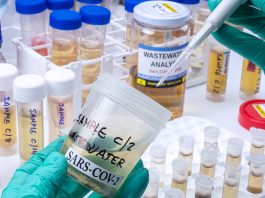A new study has found that California emits more sulfuryl fluoride, a harmful greenhouse gas, than the rest of the US combined.
It may come as a shock that California emits a high amount of sulfuryl fluoride due to its aggressive greenhouse gas reduction policies.
As much as 17% of global emissions of this gas, a common pesticide used to treat termites and other wood-infesting insects, stem from the United States.
A new study led by Johns Hopkins University discovered that the majority of those emissions trace back to just a few counties in California.
A paper detailing the results, ‘California dominates US emissions of the pesticide and potent greenhouse gas sulfuryl fluoride,’ was published in Communications Earth & Environment.
“When we finally mapped it out, the results were puzzling because the emissions were all coming from one place,” said co-author Scot Miller, an assistant professor of environmental health and engineering at Johns Hopkins.
“Other greenhouse gases like carbon dioxide and methane are found everywhere across the US. On our sulfuryl fluoride map, only California lit up like a Christmas tree.”
The researchers discovered why sulfuryl fluoride is being emitted
Miller and lead author Dylan Gaeta, a PhD candidate at Johns Hopkins, analysed more than 15,000 air samples collected between 2015 and 2019 by NOAA Global Monitoring Laboratory scientists.
The researchers factored in wind speed, direction, and other meteorological variables to trace the chemicals back to their point of origin.
The team found 60-85% of sulfuryl fluoride emissions in the US come from California, primarily Los Angeles, Orange, and San Diego counties, despite California being a national leader in reducing greenhouse gas emissions, including publishing a comprehensive plan to achieve net zero emissions by 2045.
“We can now show not only where but also how and why this gas is being emitted,” Gaeta said.
“In order to get to net zero emissions, we need a complete inventory of what greenhouse gases are out there.”
First approved by the Environmental Protection Agency for use as a pesticide in 1959, sulfuryl fluoride gained popularity after countries around the world agreed to phase out more reactive fumigants that were depleting the ozone layer, the researchers said.
Because California has kept thorough records of pesticide use, the team was able to attribute the vast majority, roughly 85% of the state’s sulfuryl fluoride emissions, to structural fumigation.
This is the practice of sealing an infested structure with an airtight tent, pumping gas into the tent to eradicate the pests, and afterwards venting the gas directly into the atmosphere. Roughly 15% came from agricultural and commodities fumigation.
Roughly 15% came from agricultural and commodities fumigation.
How harmful is this greenhouse gas?
Once emitted, the gas spreads and stays for more than 40 years in the atmosphere, where it contributes to global warming by trapping heat and sending it back down to the Earth’s surface, the researchers said.
Average concentrations of sulfuryl fluoride in the atmosphere are low; however, humans have been emitting the man-made gas for decades at a rate faster than it can break down naturally.
Gaeta explained: “Without some form of intervention, sulfuryl fluoride will continue to accumulate in our atmosphere.
“For most greenhouse gases, California has been very intentional about how it’s going to reduce emissions, but this one has slipped under the radar.”
“Sulfuryl fluoride is less harmful than the banned fumigants, but it also contributes to global warming,” Miller added.
“California’s track record shows that it’s been looking for creative, out-of-the-box ways to reduce its greenhouse gas emissions.
“I think knowing better what the emissions are and what impact they have will give the state the information it needs to help holistically develop greenhouse gas reduction strategies.”









